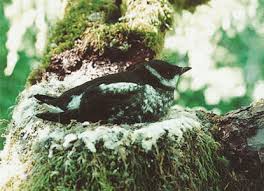This case involves the decision by the Targhee National Forest to issue new Annual Operating Instructions to the Agricultural Research Service in 2017 to allow the U. S. Sheep Experiment station to continue grazing sheep on two allotments. This case was summarized in today’s Litigation Weekly, but since it found two violations of the forest plan these are worth some further discussion. Note that the case was decided on a motion for a preliminary injunction, and the perceived risk to bighorn sheep viability was key factor in granting the PI to prevent irreparable harm. (There is also a NEPA claim that the court did not decide as part of the PI opinion.)
In order to “provide an opportunity to minimize conflicts between domestic and bighorn sheep,” the Targhee Forest Plan required these allotments to be “phased out on an opportunity basis.” “Opportunity” was defined to include “resource protection.” The court found that new telemetry data showing proximity of the bighorn sheep to the domestic sheep and other new information “reasonably could have been identified as an opportunity” to close the allotments based on the objective of resource protection instead of issuing a new AOI.
The forest plan required the Forest to maintain “at least viable populations of all native and desired nonnative wildlife . . . in habitats distributed throughout their geographic range on National Forest System lands.” The court summarized the Forest Service argument as follows: “the Forest Service asks the court to the measure the Forest Plan’s maintenance requirement not herd-by-herd, but by considering the sum of all of the individual bighorn populations Forest-wide.” The court used a dictionary definition of “maintain” to find that allowing this small herd of bighorn sheep to be extirpated “potentially will diminish the overall population of bighorn sheep throughout the Forest.” “Thus, in no way do the common definitions and understandings support neglect or deterioration of a population of animals (taken as a whole, or in part) that the Forest Service is mandated to maintain.” The court also cited agency requirements for ensuring that sensitive species do not become threatened or endangered (bighorns are classified as sensitive species on the Targhee).


